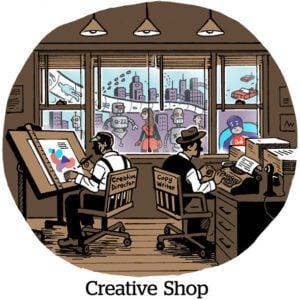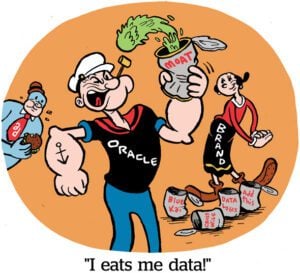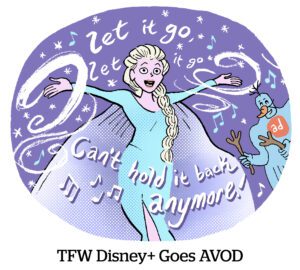There’s been no shortage of ad tech M&A lately, and video’s been one of the biggest drivers of deal activity.
“Thirty-six months ago, YouTube MCNs [multichannel networks] were the video solution of choice to reach audiences with compelling content,” said Elgin Thompson, managing director for investment bank Digital Capital Advisors. “Now, solutions intended to monetize video are consolidating.”
Consider video ad platform YuMe, which confirmed Wednesday that it is exploring a sale to RhythmOne among other “strategic alternatives.”
RhythmOne originated as digital video ad net Blinkx. If it purchases YuMe, it will continue its track record of acquiring ad nets and their assets, as it did with RadiumOne. YuMe, like its competitor Tremor early on, struggled to transition from its roots as an ad net to embracing programmatic after going public in 2013.
Despite the explosive growth of video consumption, video ad tech has grown at a slower rate than other ad tech categories, according to Brian Wieser, a senior analyst at equity research firm Pivotal.
Video advertising dollars have shifted heavily to platforms such as YouTube, Facebook and Snap. And big broadcast giants like NBCU have attracted a fair share of spend from advertisers without the same concerns over fraud and viewability seen in online video.
“When you’re buying video as an advertiser, you probably want premium content, and you don’t necessarily want it from an intermediary,” Wieser added. “And, if you do work with an intermediary, you don’t necessarily want to pay much because you value the content more.”
The following is a profile of pure-play video ad tech companies that have been acquired in the last year – and those that remain independent (for now).
Who’s Still In Play:
What it does: YuMe is a cross-screen video ad platform targeting brand advertisers.
YuMe hired Deutsche Bank to pursue strategic alternatives for the business in December 2016.
YuMe churned out about $11 million in programmatic revenue last quarter, but for many years it was strictly an ad net and didn’t get any material revenue for programmatic. As YuMe struggled to build its tech platforms, competitive video demand-side platform TubeMogul was pitching its programmatic offering to big brands and agencies.
Its secret sauce: YuMe’s differentiator is its cross-screen SDK, which has helped YuMe wedge its foot in the door at big agencies. Cross-screen capabilities are increasingly important as more digital video ad dollars trickle into over-the-top (OTT).
Simulmedia
What it does: Simulmedia is a platform which helps advertisers target viewers on linear TV.
Founded by digital media vet Dave Morgan, Simulmedia has more access to CRM and purchase data than many other digital video incumbents.
Its secret sauce: Simulmedia can pull off a direct household match to a sample of 7 million households across multiple MVPDs in 190 markets – all based on the US Census. Simulmedia captures second-by-second viewing data, which it’s able to merge with purchase data and other third-party data to improve precision.
Videology: Videology is a video ad platform serving both the buy and sell sides.
Videology competed early on with video DSP and SSP hybrids such as BrightRoll and Adap.tv, which respectively found homes with AOL and Yahoo (now Verizon-owned Oath). Videology also has an ad server and yield management platform.
Its secret sauce: Videology has made huge gains servicing telcos and cable MVPDs, particularly after launching a dedicated TV practice in 2014, which it has since decentralized. Videology has built private exchanges for AT&T, Sky Media and Canadian broadcasters Rogers and Bell Media, and it is now working toward improving the addressability of OTT.
What it does: VideoAmp is a cross-screen TV planning system, which includes both a DSP and DMP.
Its Secret Sauce: VideoAmp is focused on linking TV viewing across all screens back to its device graph, which it built through partnerships with set-top box manufacturers and cookies that are modeled back to mobile IDs. VideoAmp aims to make audience indexing more measurable by closing the gaps in visibility between a TV buyer’s linear, addressable, digital and OTT activations.
Who’s Off The Market:
What it does: Tremor is a video SSP.
Tremor sold its buy-side business to the Israeli mobile ad platform Taptica in early August for $50 million. Unlike YuMe, which has targeted its sales strategy to brands, agencies and trade desks, Tremor did an about-face to servicing the sell side as a public ad tech company.
Its secret sauce: Tremor’s SSP won big accounts from Hulu, Sinclair and Tribune, and it now operates under the experienced eye of former eXelate CEO Mark Zagorski, who came onboard in early June. Tremor’s new pitch is to go straight to video and TV publishers, emphasizing its legacy video engineering chops.
What it does: Teads is a publisher platform with an emphasis on mobile and outstream video.
Outstream video network Teads sold in March to Dutch cable and telco Altice, which also owns Optimum/Cablevision, for $307 million.
Its secret sauce: Teads emphasizes its publisher ad network of more than 500 premium publishers. Seventy-five percent of impressions transact through private marketplaces. Teads specializes in outstream placements, and the format’s sustainability is in question since many consumers find it disruptive. But Teads emphasizes to advertisers that the scale of its publisher network provides a viable alternative to the duopoly of Facebook and Google.
What it does: TubeMogul is a video DSP now doing business as Adobe Advertising Cloud.
The video DSP sold to Adobe for $540 million in November 2016. Adobe has since rebranded Tube into the Adobe Advertising Cloud, which sits under the umbrella of the Adobe Experience Cloud.
Its secret sauce: TubeMogul somehow found a way to go brand-direct without burning bridges with agencies. That strategy paid off as agencies ramped up their private trading desks powered by Tube. Adobe also inherited TubeMogul’s business called Select Access, which allowed advertisers to strike programmatic direct deals with TV networks such as A+E, Discovery and Univision. Adobe also has a business called Primetime, which – similar to Comcast’s FreeWheel – helps big TV networks distribute and monetize their streamed content.
What’s Next:
Industry observers predict video dollars increasingly will move into OTT (where a multitude of interactive video ad servers like BrightLine and Innovid play) and addressable TV environments.
And as OTT platforms like Hulu and SlingTV build ad tech infrastructure to support advanced TV and automated transactions, it’s ignited an arms race for more connected TV inventory.
“It remains early days in video,” added Thompson of Digital Capital Advisors. “YouTube is dominant now, but Facebook, Amazon, Netflix, Hulu, AT&T/Time Warner, Comcast, Verizon-Oath, Disney, Sony and Fox are all formidable. They each have the scale, influence and resourcefulness to eat rather than be eaten by the duopoly.”











